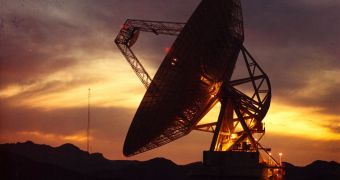The Deep Space Network (DSN) facility in Canberra, Australia, is bound to become one of the main beneficiaries of the modernization and upgrade program currently underway at the American space agency. The facility will get two new antennas.
The new 34-meter (112-foot wide) beam waveguide antennas will be installed next to the one that already exists at the Australian listening outpost. Their construction is bound to make the entire DSN network more efficient in communications.
The Deep Space Network is being used by the NASA Jet Propulsion Laboratory (JPL), in Pasadena, California, to keep in touch with a large number of space exploration missions, spread out throughout the solar systems.
One good example is the Mars Exploration Rovers (MER) mission, featuring both Spirit and Opportunity. The two orbiters around the Red Planet, Mars Odyssey and the Mars Reconnaissance Orbiter (MRO) also get commands through the DSN antennas.
Missions such as New Horizons (headed for Pluto), Dawn (poised to visit Ceres and Vesta), Cassini (in orbit around Saturn) and others also get their periodic instructions through this facility. JPL is the main organization that uses the antennas, though other NASA Directorates do to.
As such, it was only natural that the contract for the construction of the two new antenna be approved by JPL as well. The Lab officially awarded the Falls Church, Virginia-based company General Dynamics SATCOM Technologies.
“This contract, combined with General Dynamics' continuing work to modernize the space administration's ground systems, meets NASA's critical need for seamless upgrades to communications and network infrastructure, while maintaining mission critical operations,” says Gary Kanipe.
He is the vice president of General Dynamics SATCOM Technologies. The company will build the two antennas based on original specifications that will be provided by the JPL.
But, while the addition of the two new antennas is indeed good news, the new contract also draws attention to the deteriorating conditions of the larger, 70-meter antennas the DSN operates.
Maintenance efforts at these giant constructions have been postponed many times over, and the structures are reaching the end of their lives. Urgent repairs are needed, so as to preemptively minimize the amount of downtime each of them experiences.
In the near future, NASA and JPL will have to deal with this reality, and replace the massive antennas. They will most likely opt for an array of smaller dishes, SpaceRef reports.

 14 DAY TRIAL //
14 DAY TRIAL //